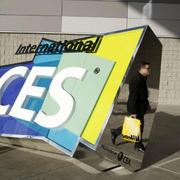
Lenovo först ut med Project Tango-telefon
Lenovo blir den första mobiltillverkare som släpper en telefon på Googles 3D-plattform för mobila enheter, Project Tango. Det meddelar Lenovo och Google i samband med CES-mässan i Las Vegas. Telefonen ska komma i sommar och kommer att ha ett pris på motsvarande cirka 4 500 kronor. Grovt förenklat går Project Tango ut på att enheter med hjälp av visuell data kan avgöra var de befinner sig i relation till andra objekt, något som bland annat öppnar upp för lösningar med så kallad augmented reality och 3D-upplevelser.
Project Tango på Wikipedia
Wikipedia (en)
Project Tango is a Google technology platform that uses computer vision to enable mobile devices, such as smartphones and tablets, to detect their position relative to the world around them without using GPS or other external signals. This allows application developers to create user experiences that include indoor navigation, 3D mapping, measurement of physical spaces, recognition of known environments, augmented reality, and windows into virtual 3D worlds.
The first product to emerge from Google's ATAP skunkworks group, Project Tango was developed by a team led by computer scientist Johnny Lee, a core contributor to Microsoft's Kinect. In an interview in June 2015, Lee said, "We're developing the hardware and software technologies to help everything and everyone understand precisely where they are, anywhere."
Google has produced two devices to demonstrate the Project Tango technology: the Peanut phone (no longer available) and the Yellowstone 7-inch tablet. More than 3,000 of these devices had been sold as of June 2015, chiefly to researchers and software developers interested in building applications for the platform. In the summer of 2015, Qualcomm and Intel both announced that they are developing Project Tango reference devices as models for device manufacturers who use their mobile chipsets.
Omni är politiskt obundna och oberoende. Vi strävar efter att ge fler perspektiv på nyheterna. Har du frågor eller synpunkter kring vår rapportering? Kontakta redaktionen



